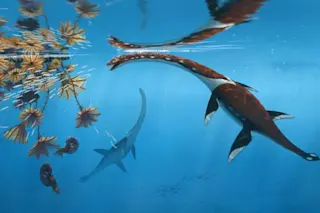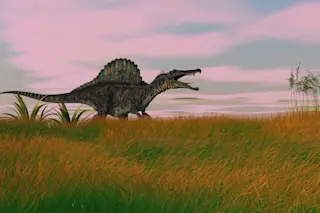During the Triassic Period (251 million to 220 million years ago), the first known dinosaurs grew rapidly and continuously — but so did many other reptiles that lived then, according to a new study in PLOS One. However, over time, dinosaur descendants generally kept up these fast growth rates, while the descendants of other reptiles eventually grew more slowly.
“One of the cool things that our study confirmed, is that, back in this Triassic system, even animals that were more closely related to living crocodiles actually grew pretty fast, and definitely much faster than their modern descendants,” says Kristina Curry Rogers, a professor of biology and geology at Macalester College in Minnesota, and one of the study’s authors.
The researchers already knew that later dinosaurs from the Jurassic and Cretaceous Periods grew faster than their crocodilian compatriots. To see if this held true for the very earliest dinos, they turned ...














